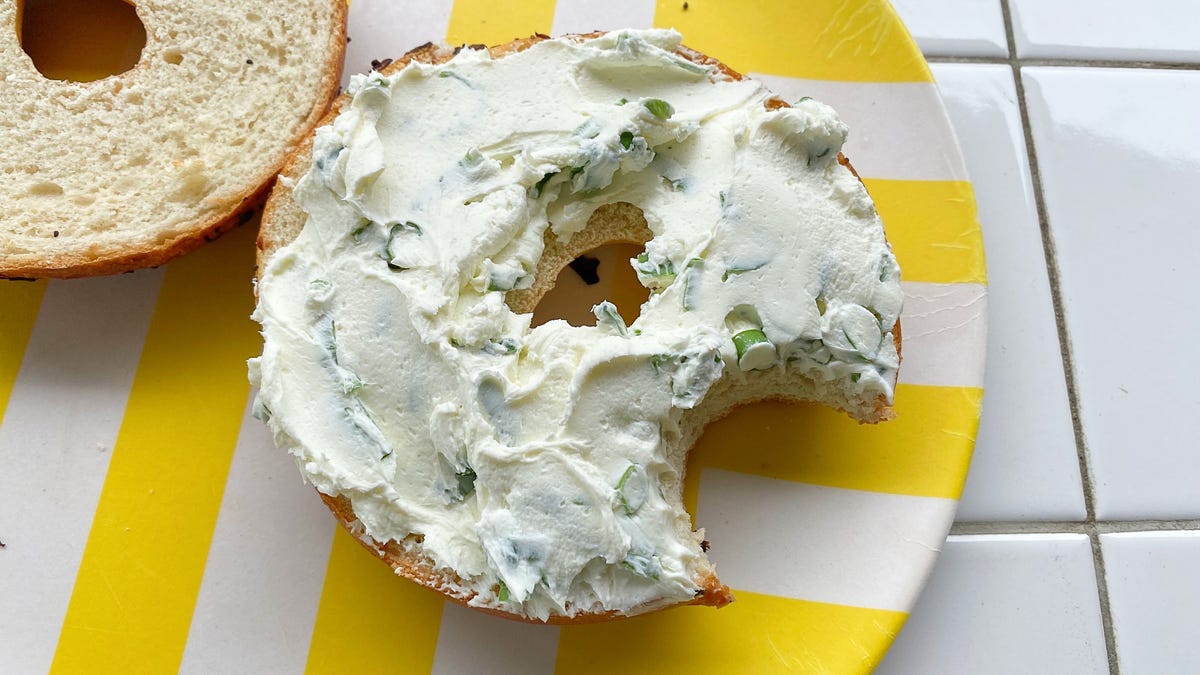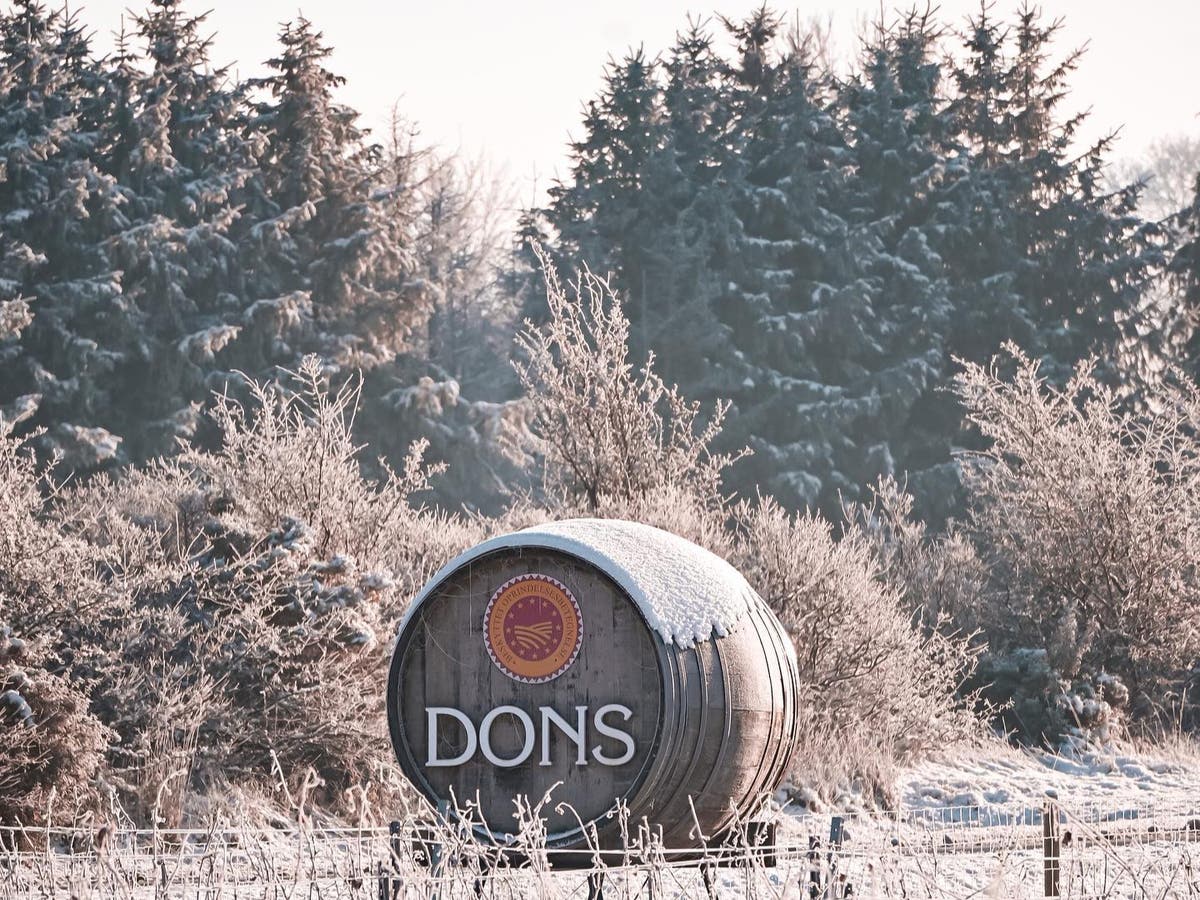The Secret to New York Deli-Style Cream Cheese Is Seltzer
I don’t claim to be a great authority on bagels. I wasn’t even aware they existed until I moved from Aberdeen, Mississippi to Los Angeles at the tender age of six. I’m also not much of a baker, even...

I don’t claim to be a great authority on bagels. I wasn’t even aware they existed until I moved from Aberdeen, Mississippi to Los Angeles at the tender age of six. I’m also not much of a baker, even with a good recipe, so I tend to accept whatever New Yorkers tell me when it comes to these boiled-then-baked rings of bread.
So when I saw this TikTok from @brooklynbagelblog, I immediately believed its claims.
According to the video, the “secret” to New York deli-style cream cheese is, as they say, in “da watah.” Seltzer water, to be exact. The video shows a pair of gloved hands splashing seltzer into a pile of cream cheese (and a few other inclusions), while the voice of the Brooklyn Bagel Blogger explains how, “Canada Dry helps whip hard cream cheese into a smooth, creamy texture,” and that they “consistently see it in the back of all the best bagel shops.”
And while Canada Dry is technically a club soda, not a pure seltzer, it’s still carbonated water, and it appears to get the job done. While the TikTok doesn’t elaborate on why seltzer is able to transform cold, hard cream cheese into a fluffy, almost glossy spread—and without a stand mixer or any other specialized equipment!—I can guess the logic behind it: You’re adding moisture and carbonation, which (in theory) softens and aerates the cream cheese.
A splash of seltzer really will transform your cream cheese
To test this hack, I took a cold block of cream cheese out of my fridge, unwrapped it, gave the wrapper to my dog for her to lick, and placed the block of cream cheese in a big bowl. I roughed it up with a big serving fork, then added a teaspoon of seltzer and worked it in with that same fork. The cream cheese immediately got a little softer—which makes sense, because smashing a substance that has a high fat content with a fork or other implement will heat the fat through friction—but it also got a little glossier and fluffier. I added three more teaspoons of seltzer, this time stirring with a silicone spatula after each addition. Then I stirred in some thinly-slice scallions. In the end, I was left with a fluffy, soft pile of cream cheese that looked, tasted, and acted just like a deli-style schmear.
But then the pedantic part of my brain started making noise: Would this work with plain water? Is the carbonation really necessary?
Waiter, there’s carbon dioxide in my cream cheese
Carbonation is measured in “volumes,” and carbonated water usually falls in the range of 3-4 volumes of CO₂ per volume of liquid. (That means that for every milliliter of water, there are 3-4 milliliters of dissolved carbon dioxide.) When I added one tablespoon of club soda to the cream cheese, I was also adding somewhere around 3-4 tablespoons of carbon dioxide.
Fitting a larger volume of gas into a smaller volume of liquid may sound physically impossible, but the amount of gas you can infuse into a liquid is dependent on temperature and pressure. The volume of the gas refers to the amount of space it would take up under standard temperature (32° F) and pressure (one atmosphere), both of which are manipulated during carbonation.
Even still, you start to lose carbonation the moment you open the bottle, and you lose a little more with each bit of manipulation, from pouring to stirring (that’s what fizzing is—carbon dioxide escaping). So there’s really no way for me to tell exactly how much CO₂ is making it into the cream cheese, at least not in my kitchen. It doesn’t really matter though; I’m less concerned with the microscopic goings on and more concerned with the noticeable macroscopic effects.
Plain water works almost as well as carbonated
I repeated the above song and dance with a new block of cream cheese, only this time I used plain tap water instead of Canada Dry club soda. I added a tablespoon of water to a cold block of cream cheese, a teaspoon at a time, as well as some sliced scallions, and the cream cheese was softer and creamier when I was done.
I tasted the two cream cheese side by side, each on their own bagel half, and each on a pretzel cracker (an underrated cracker). Visually, there was no difference, but not so when it came to the taste and texture.
Had I done just plain water and stopped there, I would have been thrilled: The extra moisture, paired with the mixing and stirring, really gave the block of cheese a creamier texture, but the cream cheese mixed with seltzer was just a tad fluffier and smoother. The plain water cream cheese was also a smidge denser, but again, the differences were slight, and (I suspect) will only be noticeable if you’re looking for them.
The bottom line: The trick really does work. Adding a tablespoon (or more) of seltzer to a block of cream cheese is an easy way to fluff it up and make it extra luscious and creamy. If you don’t have any seltzer, plain water can help, but the bubbles do seem to add an extra little something. (That something is gas, and in this case, gas is great.)

 Troov
Troov 
































